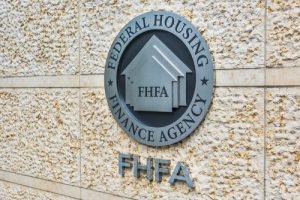 The Federal Housing Finance Agency (FHFA) put together a comprehensive account of the evolution of default risk for newly originated home purchase loans since 1990. It included several data sources to track a large number of loan characteristics and a summary measure of risk—the stressed default rate.
The Federal Housing Finance Agency (FHFA) put together a comprehensive account of the evolution of default risk for newly originated home purchase loans since 1990. It included several data sources to track a large number of loan characteristics and a summary measure of risk—the stressed default rate.
One of the key findings of the paper is that mortgage risk had already risen in the 1990s, planting the seeds of the financial crisis well before the actual event. The findings also cast doubt on explanations of the crisis that focus on low-credit-score borrowers, the paper indicated.
According to FHFA, there is still no comprehensive account of the changes in mortgage risk that produced the worst foreclosure wave since the Great Depression. The paper by FHFA is an effort to fill that gap, covering essentially the entire market for home purchase loan originations in the United States from 1990 to 2017.
Data sources also include the full set of home mortgages guaranteed by the government-sponsored enterprises Fannie Mae and Freddie Mac (the GSEs). To FHFA’s knowledge, this is the first time the entire GSE book has been used in publicly-available research on mortgage risk.
The paper shows that across the entire market, the average Combined Loan to Value (CLTV) on new home purchase loans increased substantially in the first half of the 1990s, and the average Debt-to-Income (DTI) trended sharply higher starting in 1992. The stressed default rate for the purchase loan market was already above the levels seen in the 1990s, with the largest increase for loans bundled into private-label securities (PLS) by 2000. It also noted that credit standards across the market eased in the early and mid-2000s. To cleanly identify changes in credit supply, the analysis is limited to loans for which lenders and investors fully bear the credit risk – private sector loans with no government guarantee and no private mortgage insurance.
Data also revealed that mortgage risk for the market as a whole dropped and then swung back up between 1990 and 1995, followed by a gradual upward trend through 2003 and a steep rise over 2004-2006. Mortgage risk declined sharply as credit standards tightened in the wake of the housing bust. In recent years, the risk measure has edged higher, but as of 2017 it remained near the bottom of the range observed since 1990, the paper noted. The shift in the stressed default rate over the first half of the 1990s is reflective of factors such as tightening of mortgage lending standards during the second half of 1990 and throughout 1991, likely in response to the 1990-91 recession, followed by a considerable easing of standards in 1993 and 1994. The tightening occurred partially due to lenders clamping down on loans with less than full documentation, according to researchers at FHFA.
Mortgage rates were cited as one of the factors that influenced stressed default rate. The 30-year fixed mortgage rate fell from roughly 10 percent in 1990 to 7.3 percent in 1993. This was in response to a substantial easing of monetary policy. In 1994, as the Federal Reserve reversed course by raising the rate to more than 1 percentage point. These changes in mortgage rates led to a drop in the average DTI through 1993 and then boosted it in 1994, which showed through to the stressed default rate. Moreover, with the decline in rates, many borrowers switched to 15- and 20-year loans, which are notably less risky than 30-year loans.
In conclusion, the paper stated that in today’s market, the overall risk is “near all-time lows, despite high average DTIs and CLTVs, as risky product features have largely disappeared and average credit scores remain elevated.” It added that this highlights that the post-crisis regulatory environment succeeded, at least through 2017, in limiting mortgage risk.
Read the full report here.

 DSNews The homepage of the servicing industry
DSNews The homepage of the servicing industry









